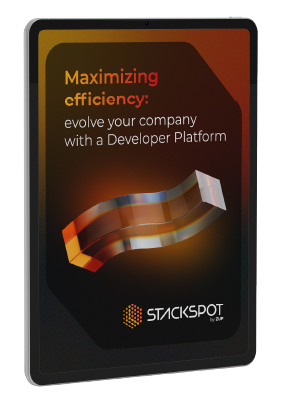Legacy application modernization is a major challenge in software development for large enterprises. Hence, senior engineering professionals need to be aware of the difficulties, skills, practices, and typical pitfalls to ensure a successful modernization journey.
This guide provides insights for senior engineering professionals seeking to understand the modernization of legacy systems and harness the opportunities that artificial intelligence can bring to the process, including speed, efficiency, and quality. Keep reading!
The urgency of legacy application modernization
Legacy systems can become barriers to progress over time: outdated technologies, inefficient processes, and a lack of adaptability can hinder growth and competitiveness.
Therefore, senior engineering professionals play a vital role in recognizing the need for legacy system modernization and championing this process within the company.
Artificial intelligence, on the other hand, can analyze and pinpoint areas for improvement during the modernization process and suggest lines of code tailored to the company’s context and business rules. Below, we’ll explore in greater detail how AI and development teams collaborate throughout this process.
Strategies for modernizing legacy systems
Before determining the best modernization strategy, it’s essential to analyze the company’s needs and constraints to adapt the plan to the specific case.
However, three strategies stand out when it comes to modernization:
1- Replatforming
In short, the replatform will migrate the legacy system to a new platform, usually with few changes to the code.
Benefits: speed and lower risk of process interruptions during the migration.
Challenges: it doesn’t fully address the problems that legacy systems bring to the operation.
2- Rewrite
This approach is more radical: the engineering team rewrites the legacy system from scratch.
Benefits: a complete overhaul of the system with modern technologies.
Challenges: time-consuming and high risk.
3- Refactoring
Refactoring involves incremental changes to the code base, enhancing maintainability and extensibility.
Benefits: gradual modernization, with lower interruption risks.
Challenges: deep knowledge of the legacy code base is required, demanding careful planning.
Consume innovation, begin transformation
Subscribe to our newsletter to stay updated on the latest best practices for leveraging technology to drive business impact
Skills of senior engineering professionals in modernization
Senior engineering professionals must have crucial skills to work on a complex project such as legacy application modernization. Check them out:
Growth mindset
When working with outdated and complex systems, senior software engineering professionals who are open-minded and adaptable —seeking growth and learning opportunities— will stand out.
Patience and persistence
Legacy systems mean high complexity, so senior engineering professionals’ patience and persistence will be tested during the modernization process.
Time and effort must be invested in understanding the legacy and addressing the challenges that emerge along the way. These skills ensure that no problem is overlooked, fostering the development of more effective and comprehensive strategies.
Understanding legacy technologies
To work with something, you must study and understand it, right? That’s exactly what this skill is about.
Professionals must know the programming languages and frameworks used and the historical context of that technology. This legacy knowledge can help them make better decisions about which approach is the most suitable and will deliver the best results.
Generative artificial intelligence can assist in this process. Leveraging RAG (Retrieval Augmented Generation), AI can analyze and convert old programming languages into modern ones that are more easily understood by engineering professionals.
Communication and collaboration
These two skills are essential for any team, but they are paramount in modernization projects. In this case, professionals must know how to communicate legacy concepts to non-technical people to ensure alignment and buy-in during the process.
In addition, effective communication and collaboration foster a culture of knowledge-sharing and ongoing learning within the team.
Adaptability
The initial plan for a modernization process can change over time. For this reason, quick adaptability, flexibility, and agility when reacting to changes are helpful skills when the strategy needs to be adjusted.
Bonus skills: encouraging automation and DevOps practices
Senior engineering professionals should use automation tools and practices to speed up modernization. In this way, the team reduces the cognitive burden and ensures more efficient outcomes.
For example, adopting DevOps ensures collaboration between development and operations teams, enabling fast deployment and continuous integration.
Challenges of legacy application modernization
Skills must keep pace with the challenges faced during the modernization process. This is a list of the main legacy system challenges and how AI can address them:
Legacy system complexity
Over the years, the legacy system got layers of code produced by many people who were once part of the development team, making it difficult to understand and maintain the system.
The challenge is to understand the complexity and untangle this information to begin modernization.
Understanding the business context
Far beyond updating a technology, modernized legacy systems provide strategic alignment with the company’s business objectives.
Senior engineering professionals who understand the business context can pinpoint modernization needs. To do this, they must be able to analyze, identify bottlenecks, and understand the impact of modernization.
Artificial intelligence is a valuable tool to understand the context. AI can analyze the entire system and identify aspects that need modernization, for example.
Overcoming technical debt
Technical debt accumulated after years of corrections and solutions can get in the way of the modernization process. The challenge is to balance this debt and encourage innovation in the system without compromising stability.
Developers need to refactor the code, remove outdated features, improve the quality of the code, and identify opportunities to introduce new technologies.
Legacy system integration
Starting from scratch isn’t always feasible, so it’s necessary to integrate legacy and modernized systems. This integration will ensure compatibility and data migration without harming the company.
However, the biggest challenge is integrating both systems, which requires senior engineering professionals with extensive knowledge.
Want to learn how StackSpot can help with your legacy modernization challenges? Watch the video:
Mistakes to avoid
A process such as legacy application modernization must keep pace with the rapidly evolving technology landscape. Therefore, senior engineering professionals have the strategic role of checking for potential pitfalls and mistakes during this journey.
These mistakes could be avoided during the modernization process:
Ignoring comprehensive planning
Senior engineering professionals can find unexpected challenges, such as delays and unplanned expenses during modernization. That’s why investing the time and effort to draw up the plan is crucial to a successful modernization process.
Here are some practices to get you started on a good plan:
- thorough assessment of the legacy system;
- identify where the problems lie and possible improvements;
- define clear objectives.
Artificial intelligence can also help here, for example, when requesting a migration plan. After analyzing the system, AI draws up a plan based on the business context, which engineering professionals can implement.
Underestimating the legacy system
Working with the legacy system is tough, so underestimating the legacy is a significant risk for modernization.
To address this challenge, the first step in introducing professionals to the system is a comprehensive analysis of the architecture, dependencies, and integrations.
In addition, having legacy specialists is a plus for identifying potential risks and challenges, making it possible to work together on efficient solutions.
Neglecting compatibility and integration problems
Legacy systems can be integrated with other systems, which can lead to compatibility and integration crises if ignored during modernization.
The most significant consequences are interrupted operations and inconsistent data — mistakes that senior engineering professionals should avoid as much as possible.
So, before thinking about modernizing a legacy system and to ensure a smooth transition that minimizes errors, consider the following actions:
- identify potential integration points;
- understand data dependencies;
- ensure interoperability between different systems.
Disregard security and compliance
Security and compliance issues can cause vulnerabilities and problems that seriously affect a company. To avoid this common mistake, the answer is to prioritize both during the modernization process.
To protect the company’s data and reputation, adopt the following practices:
- thorough security assessments;
- implementation of robust security measures;
- ensure compliance through relevant standards.
AI can also assist with security analysis. The tool recommends and tailors parameters during code correction, including language, structure, standards, and security policies.
Check out this tutorial on detecting code vulnerabilities and applying automatic fixes with StackSpot AI.
Unlock the power of legacy application modernization with StackSpot
StackSpot AI is a hyper-contextualized tool that offers more assertive suggestions tailored to the company’s business problem and insights for improving your systems.
In modernization situations, StackSpot AI can read legacy code and fully understand the system, helping to create a strategic plan to modernize it.
The outcome includes technological decisions and code suggestions that optimize and assist long, complicated, and expensive projects, such as modernizing legacy systems.
Get to know StackSpot AI in depth. Make an appointment with our team of experts!
AI and legacy application modernization
StackSpot AI combines the power of the development platform with generative artificial intelligence to empower teams to modernize legacy systems. The tool delivers value quickly, efficiently, and with more quality thanks to contextualized code.
StackSpot AI provides suggestions based on the company’s context through Knowledge Sources, which provide the information the search engine needs, such as APIs, events, custom objects, and code fragments.
Here’s what AI can do for legacy application modernization:
- Simplify modernization: analysis and identification of improvements combined with code refactoring and automation tests.
- Ensure greater code consistency: follow code and design standards already defined within the organization.
- Facilitate migration to microservices: help to break down monolithic structures into microservices.
- Contribute to cloud migration: ability to analyze, identify, and suggest improvements to cloud architectures.
- Improve testing processes: generate comprehensive test scenarios in different frameworks, ensuring complete coverage.
Conclusion
Modernizing legacy systems presents numerous challenges, including complexity, comprehension difficulties, need to overcome technical debt, and attention to interactions.
In addition, certain aspects must be closely monitored to avoid mistakes, such as underestimating the legacy system and neglecting security, planning, and compatibility.
On the other hand, modernization is a welcome challenge for senior engineering professionals looking to expand their knowledge. During this process, the team will need patience, adaptability, communication, and a growth mindset. DevOps and automation can be valuable as well.
That’s why contextualized generative AI can be a major distinction for a development team. The tool can simplify the modernization process, guarantee higher-quality code, facilitate migrations, improve testing, analyze the legacy, and offer insights to the engineering team.
With this in mind, senior engineering professionals can start the modernization journey more effectively and achieve the expected results while being aware of potential problems.











